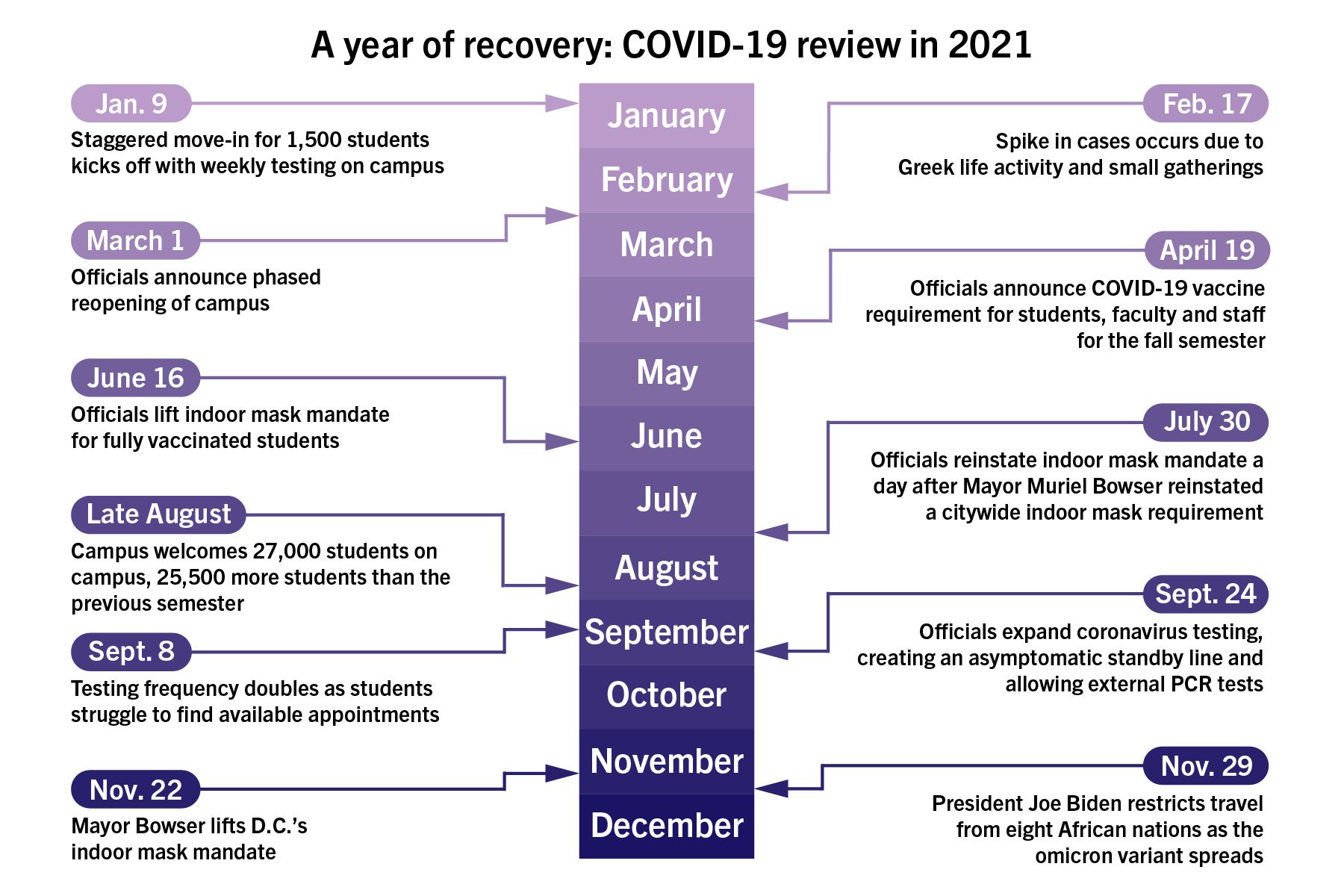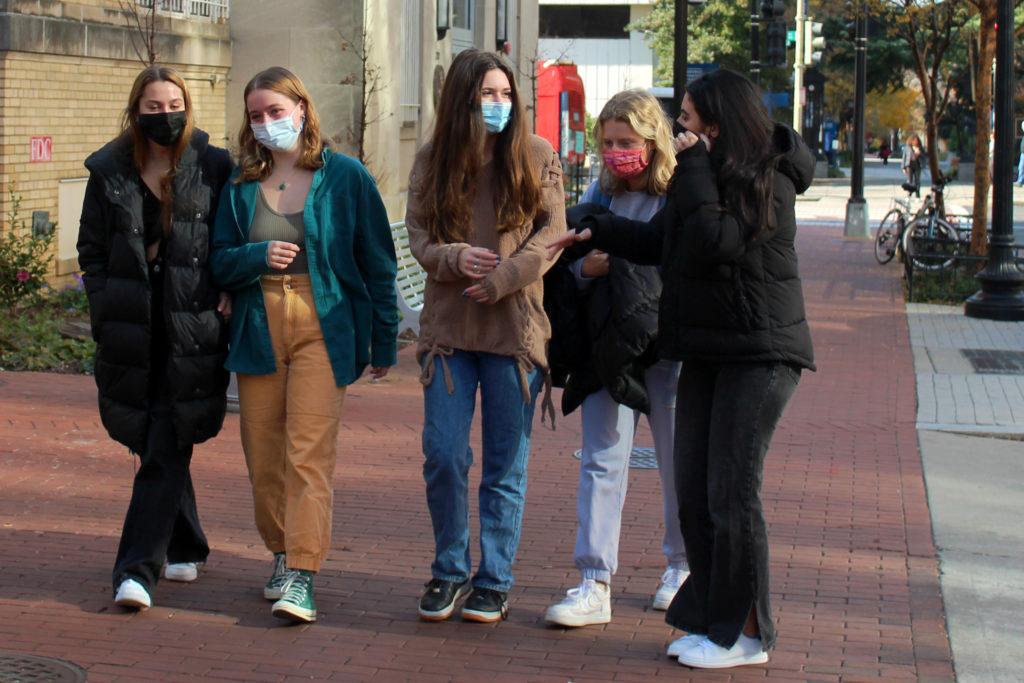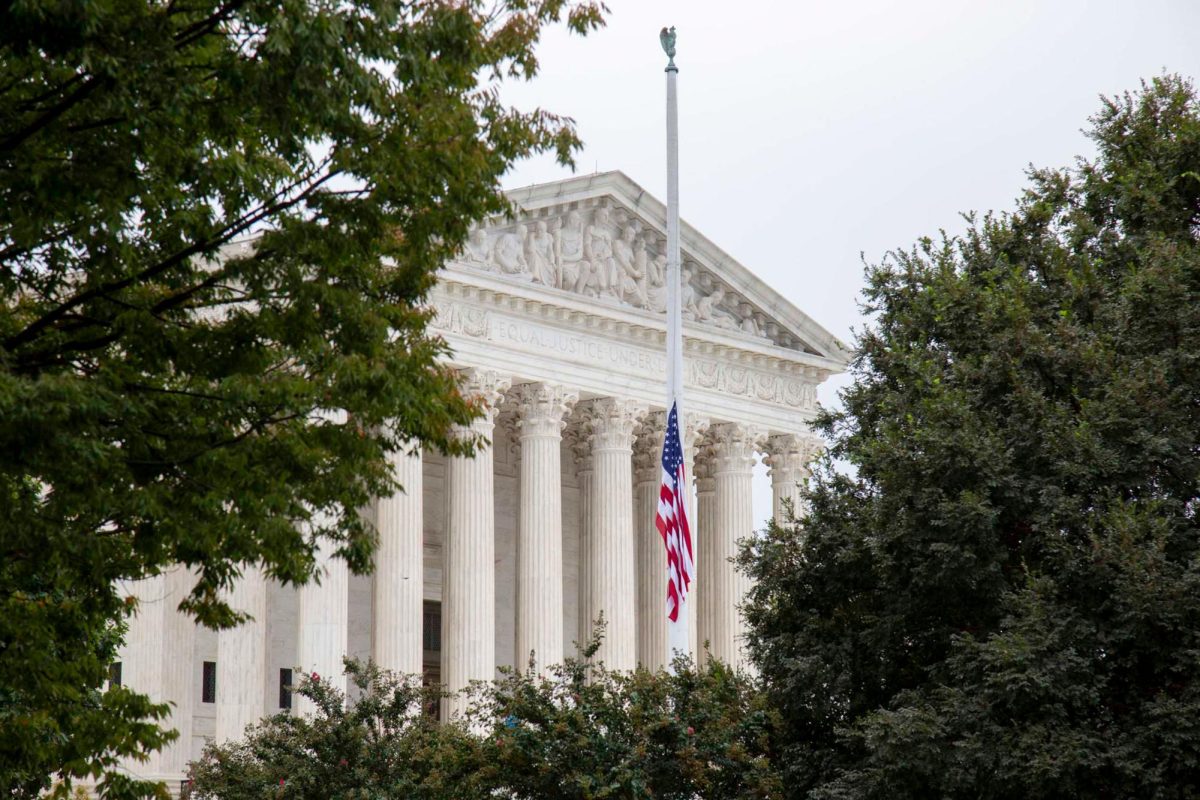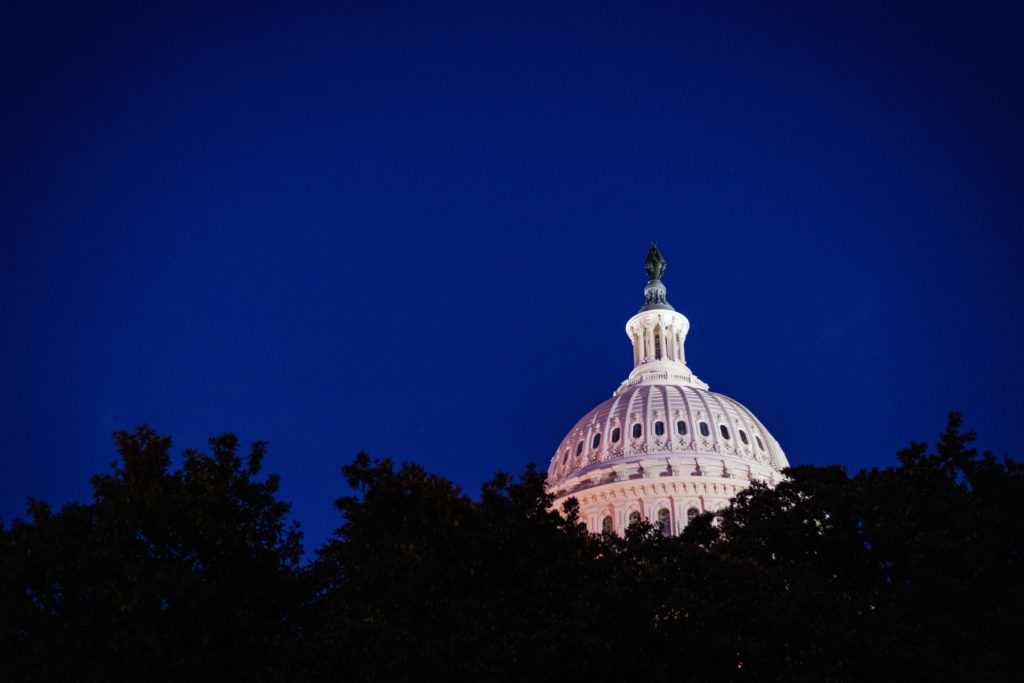2021 has proven to be a year of recovery for GW.
After the COVID-19 pandemic pulled the life and the students out of Foggy Bottom in 2020, campus has transformed from a depleted population in the spring to a full-fledged reopening this fall. At the height of the pandemic, campus was desolate with students stuck in remote classes, but since then, the neighborhood has been bustling with students packing the Smith Center and poring over homework in the University Student Center in between classes.
Following more than a year of virtual learning, the number of students on campus has boomed from 1,500 to 27,000 since the start of the calendar year. Officials established an indoor mask mandate, implemented a COVID-19 vaccine requirement — resulting in a 97 percent student vaccination rate — and expanded COVID-19 testing to bring back students safely.
While the University focused on limiting the spread of the coronavirus on campus, professors also focused on COVID-19 research projects, like models to speed up the turnaround time for test results. Professors also conducted studies on the pandemic’s effects on mental health and developed strategies to target socially vulnerable communities in wards 7 and 8 to eliminate vaccine hesitancy.
As campus reopened in September, Ray Lucas, the University’s COVID-19 coordinator, said officials are monitoring community case rates, COVID-19 transmission from on-campus activities, scientific studies and vaccine mutations that can impact GW’s “operating guidelines.”
“With our multi-layered approach to campus safety, we believe our campus is one of the safest places you can be with regards to COVID-19,” Lucas said in an email earlier this fall. “However it remains everyone’s responsibility to choose their social activities wisely so as not contract COVID in the community and or to spread it on campus.”
Here’s a look back at how the University has rebounded in 2021:
Spring – Campus population remains thin
Officials gave their first indication that campus would stay quiet for the first months of 2021 when they announced in October 2020 that classes would remain online for the second full semester in the spring.
The calendar year started with 1,500 students moving onto campus for a third semester of remote learning, 1,000 more than the preceding fall. Upon moving in, campus residents were required to test for COVID-19 weekly until May.
In February, COVID-19 infections spiked to a then all-time high of 32 positive cases Feb. 17, a rise that officials attributed to Greek life activity and small gatherings.
Less than a month later, officials announced the University would begin its “phased reopening” during the summer with some classes on campus meeting in person.
As the University began to look ahead to its reopening for the fall semester, officials announced in April that all GW community members who plan to attend fall in-person classes must be fully vaccinated two weeks prior to coming to campus. Public health experts backed GW’s vaccine mandate, saying it was crucial for establishing herd immunity and containing outbreaks.
Summer – Administrators prepare for in-person reopening
Shortly after the spring semester ended in April, officials shifted from weekly to monthly COVID-19 tests for all fully vaccinated campus residents in May, as the COVID-19 caseload started to recede.

Nicholas Anastacio | Graphics Editor
Officials prepared for the upcoming in-person fall semester, naming Lucas – a professor of emergency medicine – as GW’s COVID-19 coordinator to serve as a “central point of contact” for the University’s COVID-19 protocols in June. The University briefly lifted the indoor mask mandate in June in accordance with city guidelines before reinstating it at the end of July as cases began to resurge with the ongoing spread of the Delta variant.
Fall – Thousands return as campus reopens
More than a year and a half after students cleared campus in March 2020, the University unlocked its classrooms for in-person classes to restart Aug. 30.
Students and faculty worked to adjust to a reopened campus life at the start of the semester, but some effects of the pandemic continued to linger.
As in-person classes returned, the University required all students to remain masked in their classrooms, making an exception for professors, who could remove their face coverings while teaching six or more feet away from students. Students said most professors complied with the maskless teaching policy.
As cases began to rise during the third week of classes, officials increased the COVID-19 testing frequency from once to twice a month for all vaccinated GW community members in early September.
The policy change left students struggling to find available testing appointments for more than a week in September. Later that month, officials expanded COVID-19 testing capacity, creating more appointment hours, implementing a testing standby line and allowing external tests.
Officials opened a new COVID-19 testing site on the Virginia Science and Technology Campus at the end of October.
The University has yet to establish a testing site on the Mount Vernon Campus – where about 700 students reside – raising concerns from students about contracting COVID-19 from symptomatic commuters riding the Vex to Foggy Bottom to get tested. But public health experts said COVID-19 transmission on the shuttle is unlikely, given that 97 percent of the student population is fully vaccinated.
Mayor Muriel Bowser lifted the District’s indoor mask mandate late last month, but GW officials said the University’s requirement will remain in place until further notice. The D.C. Department of Health recommended that people wear masks in all indoor settings last week, but Bowser refrained from reinstating a blanket indoor mandate, despite Maryland recording three cases of the Omicron variant.
Vaccine, mask requirements helped control cases, experts say
Experts in public health said the University’s implementation of the mask mandate and vaccine requirement were critical in managing case upticks because they helped prevent COVID-19 transmission.
Amira Roess, a professor of global health and epidemiology at George Mason University, said GW’s policy to test all fully vaccinated students twice a month is “a great strategy” because it allows the University to identify positive cases right away.
“What you all have done is really increase your testing so that you could identify cases immediately and really to stop any kind of transmission and any kind of disruption to the academic semester,” Roess said. “And I think if you could afford it, that’s the way.”
David Larsen, an associate professor of public health at Syracuse University, said GW made the right choice in implementing a vaccine and indoor mask mandate.
“GW is doing the right thing,” Larsen said. “They have prioritized vaccinations, which are the best public health tool we have to fighting this pandemic. They got a mask mandate. Masks reduce transmissions amazingly well, much better than anybody even dreamed.”
Ellen Carlin, an assistant research professor at Georgetown University’s Center for Global Health Science and Security, said the more than 1,000 positive cases that GW has logged since January make “a lot of sense” given the transmissibility of the virus and the large student population.
“While the number is a bit higher than what anyone would want, I’m not sure that it’s too surprising given how transmissible this virus is and given that GW has a large population that is living in close quarters with each other and attending class in close quarters with one another,” Carlin said.








